Mold Machining In Motion
This shop's strategy for limiting lead time on large molds affects the choice of machine tool. It also affects who does the programming.
CDM Tool & Manufacturing Co. in Hartford, Wisconsin, recently quoted a 19-week delivery time for a large, complex stack mold. But the customer came back soon after that quote was accepted. The molder faced unexpected pressure to put that tool into production sooner. So CDM set the quoted lead time aside, accelerated production of the mold, and delivered the job in just under 10 weeks.
"We had good luck," says CDM vice president Brian Priestaf. The right people and the right machines at this 50-employee shop all happened to have the right amount of open time available to fit the faster schedule.
But the shop had prepared itself to take advantage of exactly this kind of good luck. The compressed lead time on the stack mold job was no aberration. To one degree or another, CDM's customers are all being squeezed into faster production cycles that directly affect how quickly CDM is asked to deliver. In response, the shop has been changing its process to ensure that jobs flow faster.
The primary aim is not to perform each step in the process in less time. Instead, the shop's main objective is to combine steps, or speed the flow between steps, in the hope of eliminating as many bottlenecks as possible that might delay the progress of a job. The goal is to keep each mold moving.
This objective shapes the choice of machine tool. As much as possible, the shop wants to be able to machine a core or cavity entirely on one machine.
It also affects how jobs are programmed. Traditionally, the most frequent source of bottleneck had to do with just getting the job out of the office and onto the shop floor.
To overcome this source of delay, CDM underwent a major transition to shopfloor programming. Instead of the engineering department establishing the geometry for each job and creating the tool paths while operators waited, that department now performs only the geometry work. The programs are generated on the shop floor, where seats of CAM software run near the machine tools. Today at CDM, the machinists make the tool paths.
This shift in responsibilities goes a long way toward letting the shop work more efficiently. But once the job gets set in motion more quickly it has to keep on moving quickly. That's where the choice of machining strategy comes in . . . as well as the choice of machine.
Perhaps the most significant machine tool purchase the shop has made recently relates to single-setup production of molds larger than an average-sized machining center's work zone. The stack mold was one example of such a mold. Big molds like this one make up a big portion of the shop's business.
But factors related to machine design make small molds easier to machine complete, Mr. Priestaf says. Fast, light cuts on a high speed machining center often can finish a part effectively in one setup when the part is small. Extending this same technique to large molds proved more difficult for the shop. Its existing large machines, plus most of the large machines it considered buying, all were suited for either heavy roughing or fine finishing, but not both. What the shop needed was a large machining center that could remove material from a solid block quickly during the roughing cycle, then perform effectively as a finishing machine for the same part.
Big Efficiency
An accessory helped the shop realize this mix.
The machine the shop chose—two times—was a model MPF bridge-type vertical machining center from Toshiba Machine (Elk Grove Village, Illinois). Each of the two model MPF machines the shop purchased has a table measuring 70 by 55 inches and a 36 hp spindle capable of 10,000 rpm. This model strikes the balance the shop was looking for between roughing and finishing, Mr. Priestaf says.
Further finishing capability comes from the accessory Toshiba Machine also provided—a 30,000 rpm air-powered spindle that loads into the main spindle just like a toolholder. It runs off the machine's forced air system.
When large molds feature fine details, CDM can use this spindle to machine those details precisely and efficiently using small end mills.
However, "even based on the main spindle, this is still a high speed machine," Mr. Priestaf says. For CDM, the primary value of high speed machining comes when the machining center can use fast cuts to machine the part complete. These large verticals have both enough speed and enough cutting torque that the shop can now apply the same high speed machining techniques to larger molds that it has already been using for smaller ones.
These techniques represent a considerable departure from the way the shop used to machine molds. Not too long ago, cores and cavities were roughed only to within 0.1 inch.
Slow, heavy cuts were used, resulting in heat build-up that often caused the part to warp. To address this, the part was often removed from the machine for grinding and sometimes for stress relief. The part might then go back to the same machine for semi-finish or finish milling. If higher-precision finish work was required, at least one more machine would be added. This could be a milling machine with higher rpm, an EDM machine or possibly both. (See sidebar on page 98.)
Speed is just one of the factors that now makes it possible for the shop to go from block to finished part on one machine. Faster cutting during roughing lets the shop take lighter cuts and still remove the same amount of material in the same amount of time (if not faster). The lighter cuts also encourage the chip to carry away much of the heat. As less heat builds up in the part, the part is prevented from warping and therefore doesn't have to be removed from the machine between roughing and finishing.
Another important factor is accuracy. All of the shop's newer, faster machining centers can be trusted to hold close tolerances at high feed rates. This lets the shop cut much closer during roughing to reduce overall machining time. Instead of roughing to within 0.1 inch, now the shop routinely roughs to within 0.025 inch.
The software is also more accurate, and this is equally significant. When tool paths came from the engineering department, they were created on a high-end, integrated CAD/CAM system. Now, less expensive software is capable of generating complex, efficient tool paths reliably and automatically. This accounts for why CDM can now equip operators with all the seats of software they need to create the programs themselves.
"We used to have operators standing in line at the engineering department," Mr. Priestaf says.
Today those operators are sitting.
CAM Seats
The presence of padded, comfortable chairs on the shop floor is one of the most visible signs of CDM's commitment to shop floor programming. Another sign is the powerful PC running near each major CNC machine.
CDM has now divorced toolpath generation from the engineering department. The office no longer sends program files to the shop floor; it just sends geometry. Gaps in the customer's model are addressed and the parting line is established, but after that, the tool paths are left to the operator who will actually run the job.
Now, an operator routinely has one job running on the machine while programming the next job in the CAM software. Some operators—such as the one overseeing the two identical Toshibas—keep two machines programmed and running at once.
In almost all cases, CDM's operators already had the skills necessary to perform in this expanded role. They just needed the tools.
Seats of WorkNC from Sescoi USA (Southfield, Michigan) make this approach to programming possible. The shop chose this software for various features that streamline toolpath generation and therefore make it easy for the software to be used effectively beside the machine tool. A variety of options for cutting strategy allow an operator to tailor the tool paths specifically for high feed rates. Also, a feature for modeling and remembering assemblies of tool, toolholder and spindle lets the software automatically calculate the length of tool the program needs in order to avoid collisions with a complex workpiece.
Perry Merkes is a machinist who runs the large verticals and works with the software regularly. He says PC processing power is another important ingredient. Powerful PCs free the operators' creativity, because operators can experiment with various toolpath scenarios without having to wait for the computer to crunch the numbers each time. Thus, ample computing power contributes directly to more effective tool paths.
Knowledge Flow
Mr. Priestaf says this operator creativity is exactly what he wants to encourage. The next step in making the process more productive, he suspects, may directly relate to the employees. Specifically, the challenge is to put in place a system that simplifies and encourages the sharing of ideas among them.
That sharing is far more important today. It used to be that the company's programming expertise resided essentially in one man—the one the operators waited for when they stood in line. Now, programming is decentralized, and the shop has some 20 different operators all discovering different ways to machine better, and all learning different techniques at different rates.
They do talk, and they do help one another. But Mr. Priestaf is alert for ways to let operators pool their knowledge even more effectively.
"It's funny—if there's a rumor, everyone seems to know it. But if someone discovers a better way to run a job that saves some time and money, sometimes that news never gets around."
Sporadic communication, he says, may be the next bottleneck this shop will overcome.
Related Content
Inside the Premium Machine Shop Making Fasteners
AMPG can’t help but take risks — its management doesn’t know how to run machines. But these risks have enabled it to become a runaway success in its market.
Read MoreInverting Turning and Five-Axis Milling at Famar
Automation is only the tip of the iceberg for Famar, which also provides multitasking options for its vertical lathes and horizontal five-axis machine tools.
Read MoreCNC Machine Shop Honored for Automation, Machine Monitoring
From cobots to machine monitoring, this Top Shop honoree shows that machining technology is about more than the machine tool.
Read MoreThreading On A Lathe
The right choices in tooling and technique can optimize the thread turning process.
Read MoreRead Next
3 Mistakes That Cause CNC Programs to Fail
Despite enhancements to manufacturing technology, there are still issues today that can cause programs to fail. These failures can cause lost time, scrapped parts, damaged machines and even injured operators.
Read MoreThe Cut Scene: The Finer Details of Large-Format Machining
Small details and features can have an outsized impact on large parts, such as Barbco’s collapsible utility drill head.
Read More
.jpg;width=70;height=70;mode=crop)



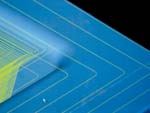
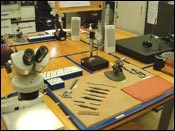

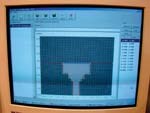

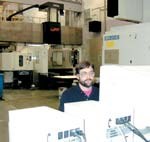
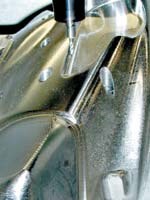
%20and%20toolmaker%20Joe%20Romanski.jpg;width=860)
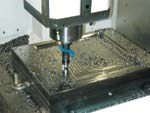




.jpg;maxWidth=300;quality=90)
.jpg;maxWidth=300;quality=90)
.png;maxWidth=300;quality=90)







.png;maxWidth=300;quality=90)











